How to Use the Instant Pot for Indian and Pakistani Cooking
Considering stovetop pressure cookers have been the norm in Indian and Pakistani kitchens for decades, it’s no surprise that modern-day electric pressure cookers like the Instant Pot have also made their place. This post highlights some pros and cons, FAQs, and includes helpful Instant Pot cooking times!
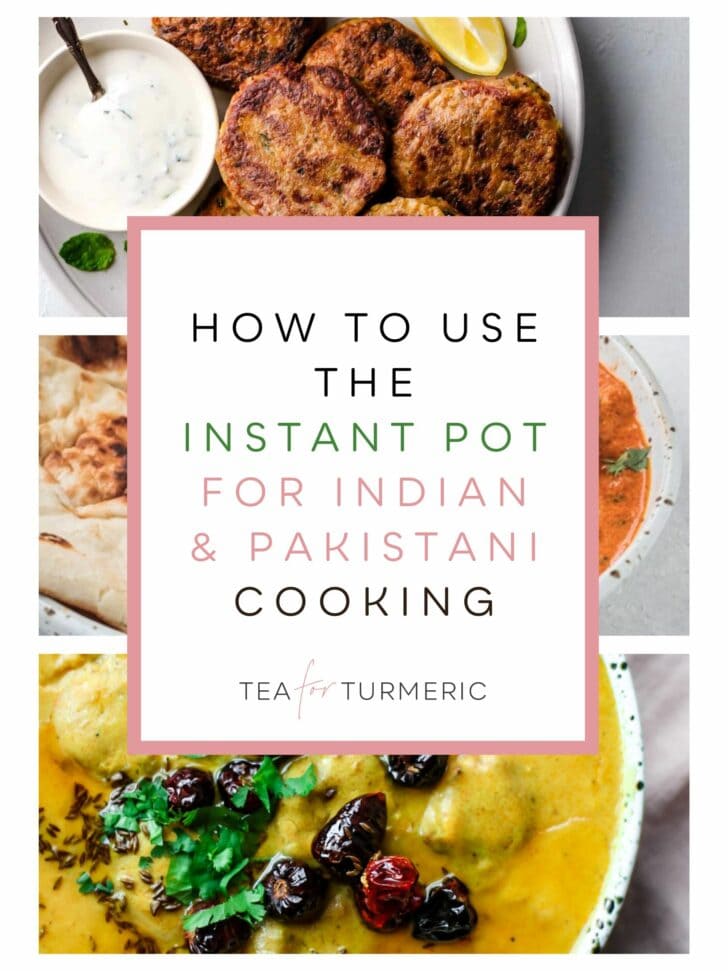
Want to save this post?
Enter your email below and get it sent straight to your inbox. Plus, get recipes & tips every week!
If you’re new to the Instant Pot or just want to learn how to use it for Indian & Pakistani cooking, this will help shorten your learning curve. It includes helpful tips on how much water to add, how to prevent the burn error, and which curries are better off cooked on the stovetop.
This post is a living document that I plan to update as I learn more, so feel free to comment below with any questions!
Pros of the Instant Pot:
- Convenient and hands-off, so there’s no watching the clock, intermittent stirring, or turning it off. You simply enter the time to pressure cook and it automatically cooks for exactly that time.
- Silent compared to the whistling and noise of a traditional Indian pressure cooker.
- Increased safety including auto-shut off after a ‘burn’ message to indicate food scorching.
- Has pre-set timings and functions to take the guesswork out of how long to cook certain items.
- Just like a traditional pressure cooker, you can sauté at different temperatures in the Instant Pot. (More is great for browning onions and meat and Less is great for simmering curries and dals post-cooking.)
If you want more pros, Kiran from Mirchi Tales shares 10 reasons why every desi household needs a Multi-cooker.
Cons of the Instant Pot:
- The inner pot is thin-bottomed, so it doesn’t retain heat as well as thicker bottomed pots.
- It takes longer to sauté out (bhunna) curries like this beef stew to get rid of the excess liquid.
- It’s not ‘Instant’. I find meats like beef and mutton take longer in the Instant Pot than in traditional pressure cookers.
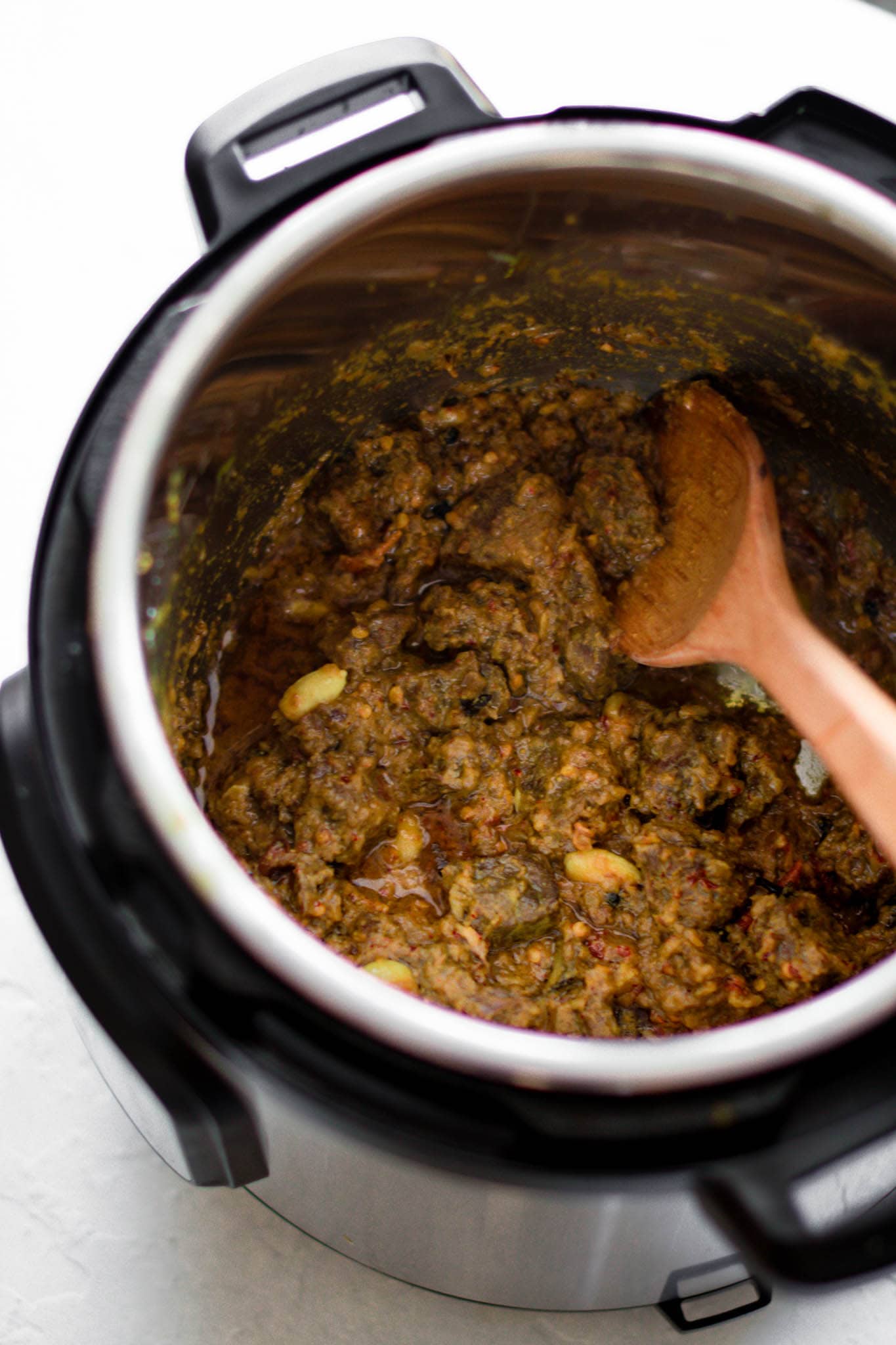
Is the Instant Pot good for Indian cooking?
Of course! I was surprised to see in this NYT article that there are more Indian pressure cooker cookbooks than any other cuisine. South Asian cooking is inherently full of one-pot dishes, curries, and stews, which can easily be adapted to the Instant Pot.
How much water to add to the Instant Pot vs Traditional Pressure Cooker
Since there is no evaporation in the Instant Pot, you’ll have to greatly reduce (or even eliminate) the amount of liquid you would add in a traditional pressure cooker.
For curries, this often means utilizing the moisture in onion and tomatoes as well as within the vegetables and meat to cook the dish.
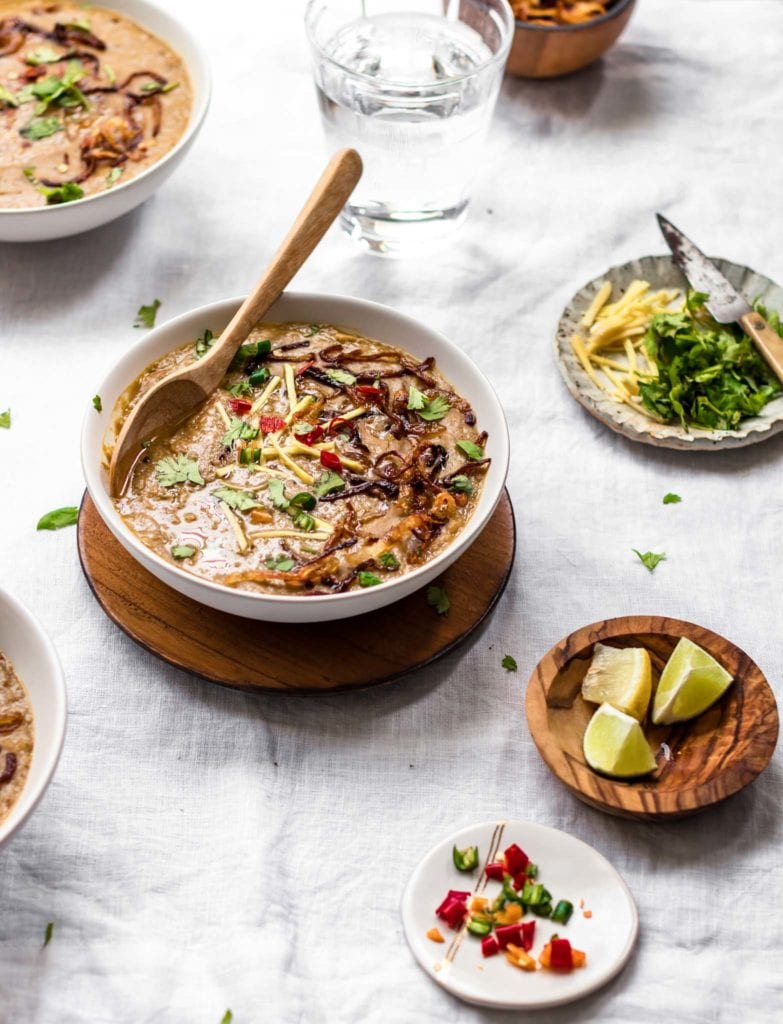
How to Prevent the Burn Error when making Curries
- The first tip is to ensure that there’s enough moisture from the food and any additional liquid.
- Next, deglaze and scrape off any bits from browned onions and masala that may cause burning once under pressure.
- For dishes that have a tendency to scorch like this yogurt-based Kadhi or this milky Kheer, ensure that the mixture comes to a boil before you pressure cook. This prevents grains and gravies from sticking to the bottom of the Instant Pot while building pressure.
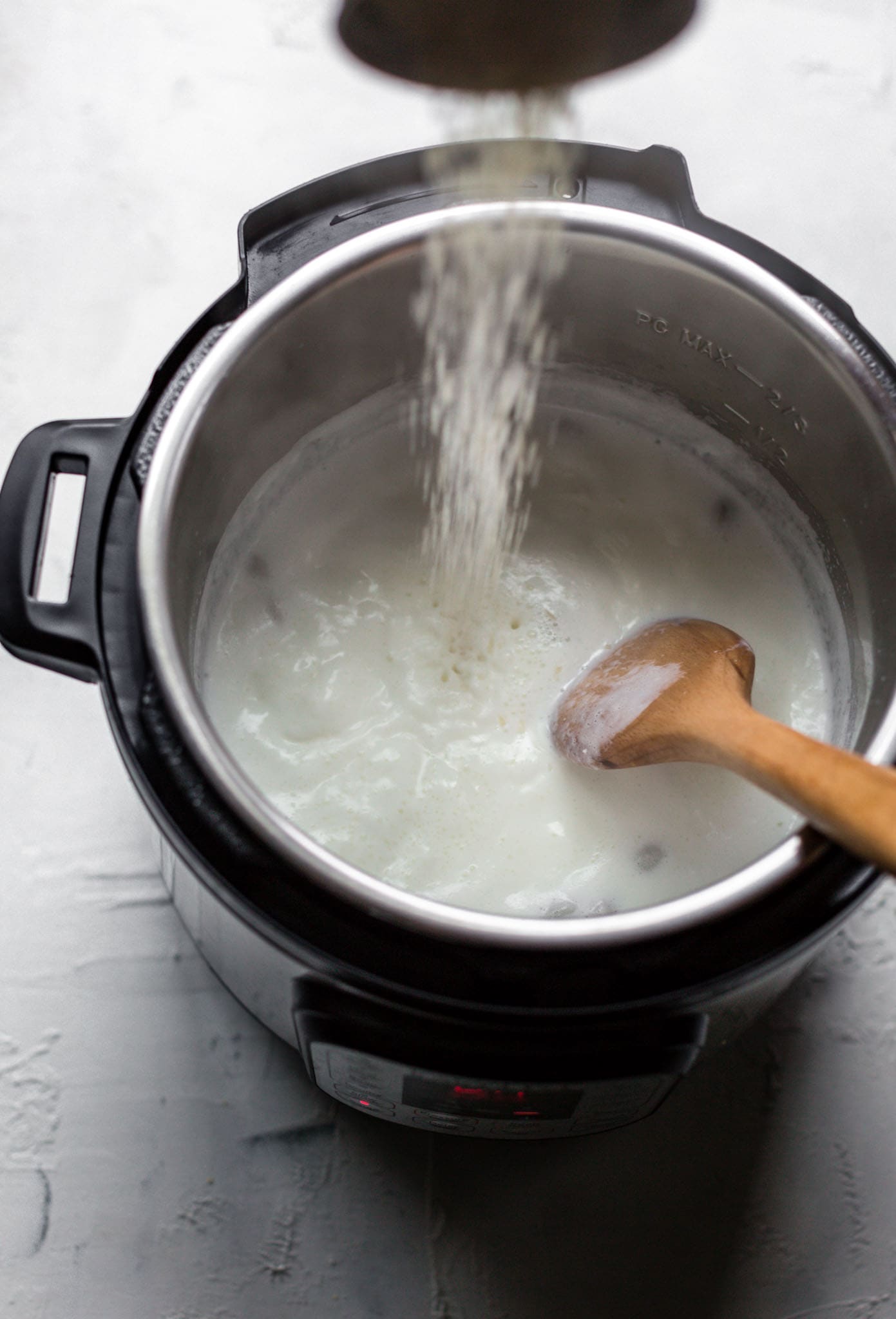
How to cook rice dishes like pulao and biryani in the Instant Pot
Rice has a tendency to get mushy in the Instant Pot, so it’s very important to control the amount of liquid.
When cooking rice, it’s a good idea to first pressure cook, then finish off cooking in the residual heat (similar to the desi concept of dum). This allows the rice to finish cooking and absorb the flavors.
Chana Pulao is a good starter recipe because it has no added moisture other than water. Once you get an idea of how to control the liquid, move on to this deeply flavorful Chicken Pulao.
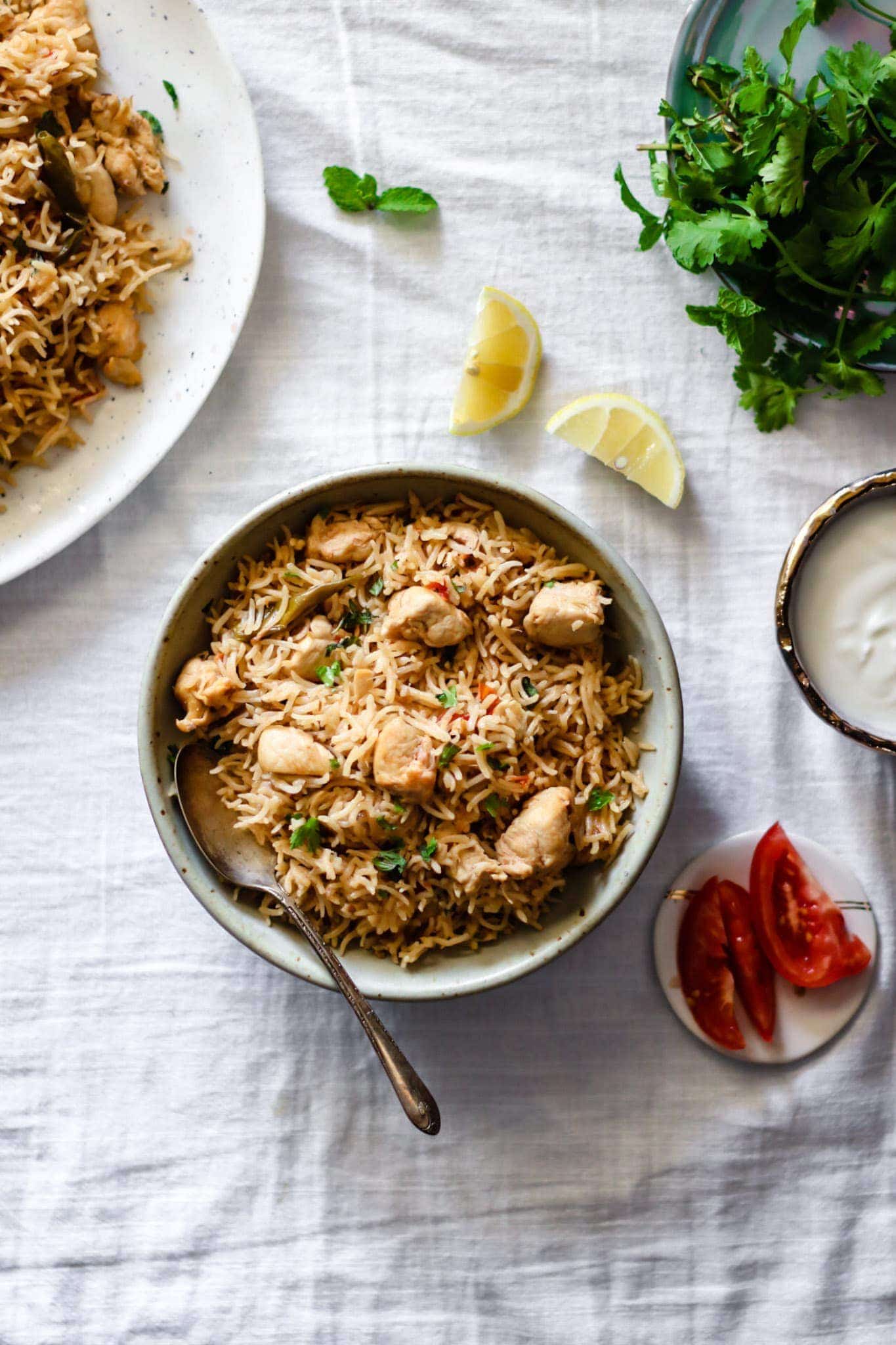
Which curries cannot be cooked in instant pot?
Stir-fried curries that don’t require a lid like this Baingan Bharta or Okra Curry don’t need to be cooked in the Instant Pot. If the dish only needs to be sautéed (bhunna), it’s better off cooked on the stovetop.
Similarly, some vegetable curries (like this Mixed Vegetable Curry) are best left to cook in their own juices without any additional water. Cooking them in the Instant Pot without water runs a higher risk of getting the Burn message.
My review of the Instant Pot Air Fryer Lid
I love the air fryer as an alternative to deep-frying pakoras or other snacks. But, I’d only recommend the Instant Pot Air Fryer Lid attachment if you have a very small family and only need a small amount of food.
When making kababs or fries, I would suggest using the 400F setting at 10 minutes, then flipping and cooking as much as needed.
When it comes to air-frying desi snacks, I’ve learned that whatever you’re making should have some kind of fat (like oil) to make sure they come out moist.
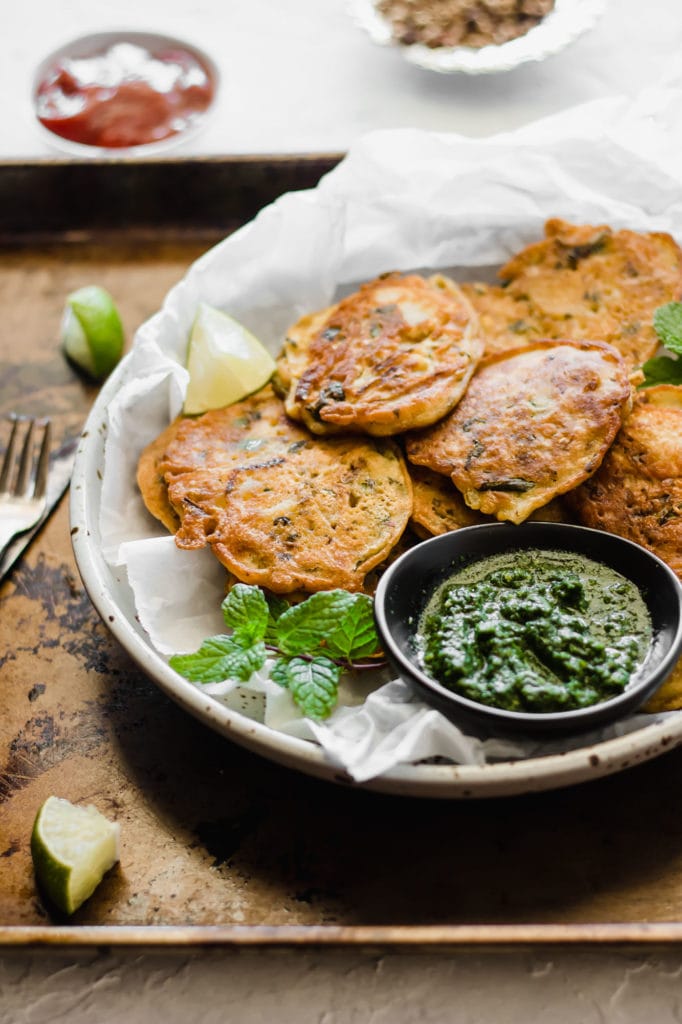
Helpful Daal (Lentil) Cook times in the Instant Pot
Daal (or dal) is one of my favorite things to cook in the Instant Pot. Just dump and go and then add tadka! Here are the settings I use:
| Type of Dal | Pressure Cooking Time (no-soak) |
| Sabut Masoor Dal (Whole Red Lentils) | High Pressure – 20 Minutes |
| Maash Ki Dal (Urad dal) | High Pressure – 4-5 minutes |
| Sabut Urad Dal (Whole Urad Lentils) | High Pressure – 20 Minutes |
| Chana Dal (Split Chickpeas) | High Pressure – 15-22 Minutes |
| Masoor Dal (Red Lentils) | High Pressure – 6 Minutes |
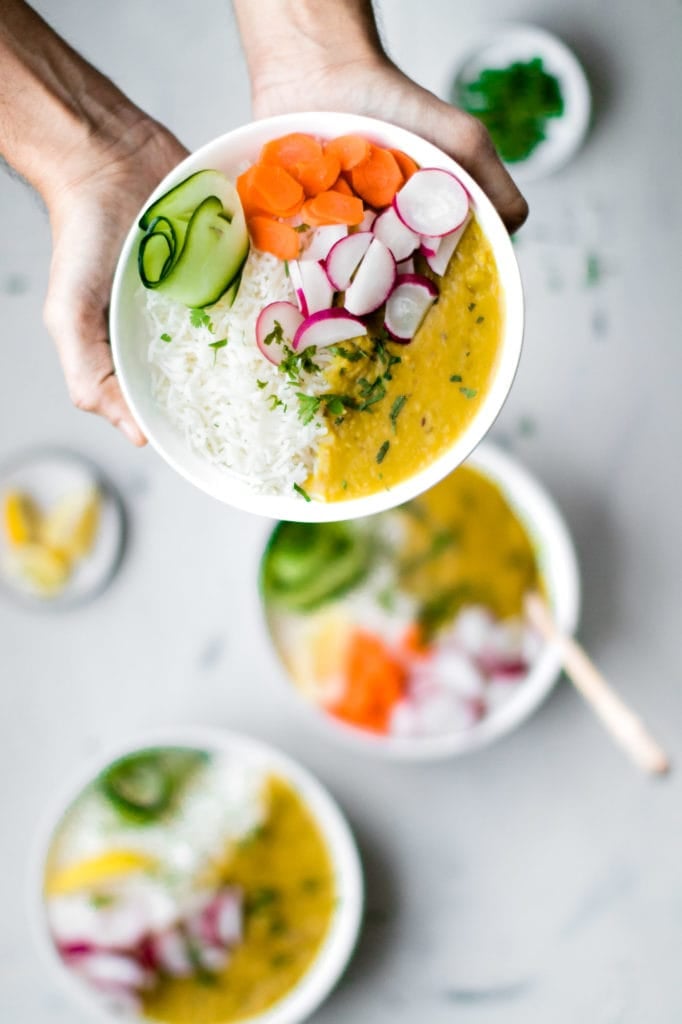
How long to cook cut up, bone-in chicken in the Instant Pot
For well-cooked chicken typically eaten in curries, you’ll need to pressure cook on High for 10-12 minutes. If the bone-in chicken pieces are small, you’ll be able to cook them in as little as 6 minutes. (Pictured below is Instant Pot Pakistani Chicken Curry with Potatoes.)
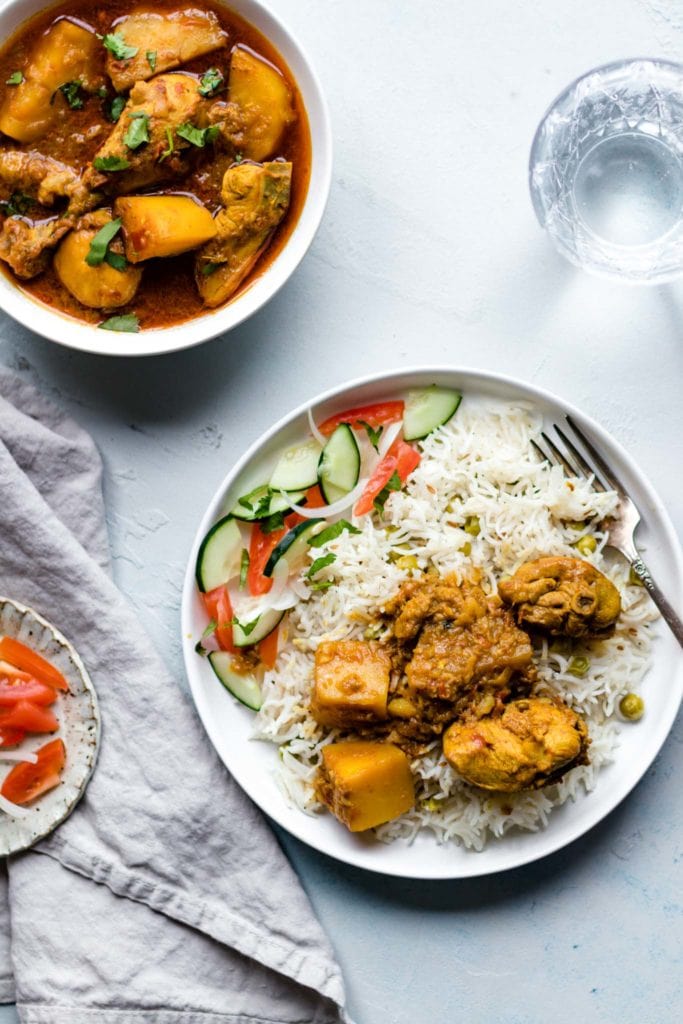
Which Instant Pot is best for Indian & Pakistani Cooking
I get many questions regarding which Instant Pot is the best. I have the Duo 6 quart and it works well for me. If you have a larger family (6+), then an 8 quart may be right for you. Here’s a helpful article that that compares the latest IP models.
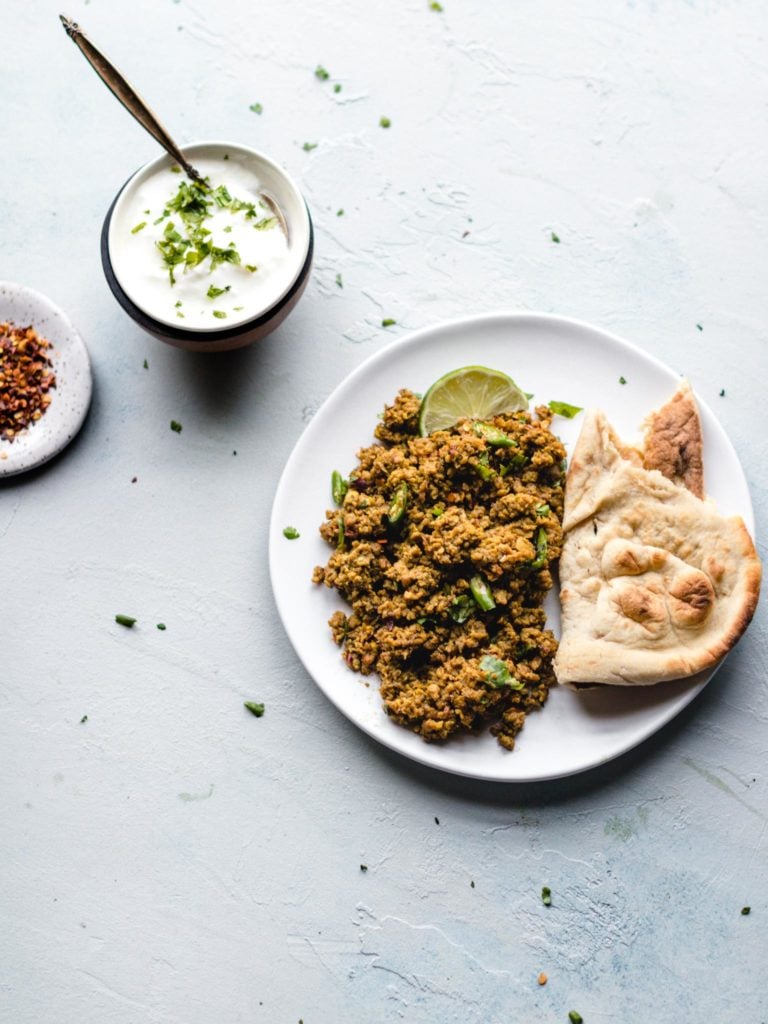
Looking for some recipes to try? Here’s a roundup of 15+ Easy Pakistani and Indian Instant Pot recipes!
Any questions? Comment below and let me know your thoughts! Thanks for reading!


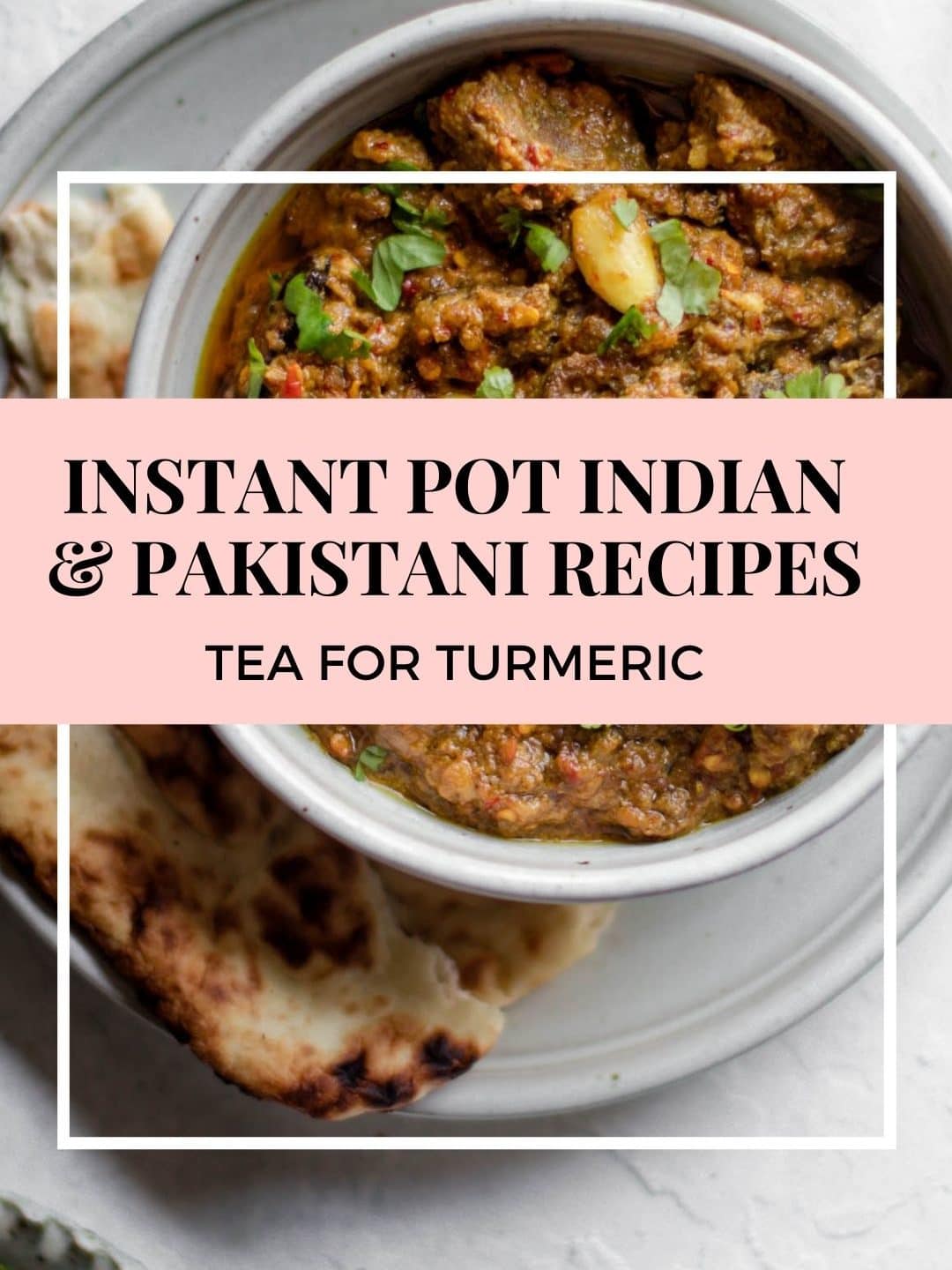
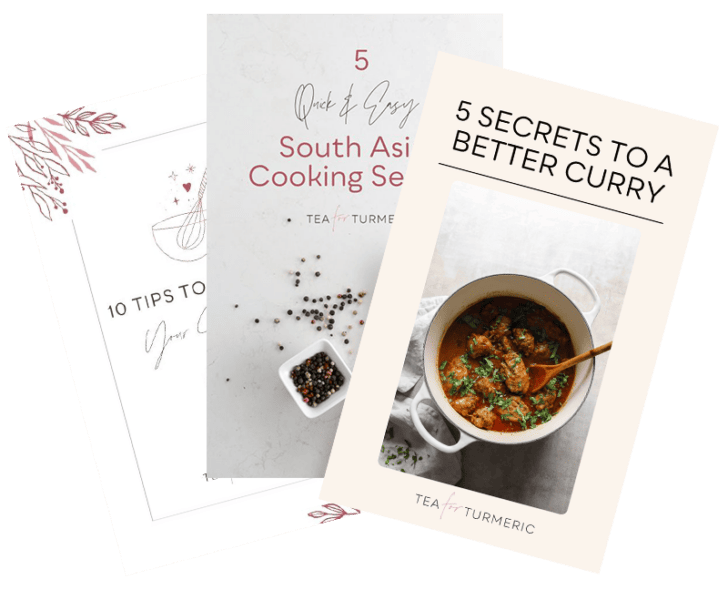
10 Comments on “How to Use the Instant Pot for Indian and Pakistani Cooking”
Hi Izzah,
One IP related question – if a stovetop pressure cooker recipe calls for 5 whistles, how many minutes will that be for the Instant pot?
Hello Shanaya, I’m not sure of that one since my stovetop pressure cooker doesn’t really have noticeable whistles lol. Can you tell me what you’re cooking and maybe I can help you out with the timings?
Hey Izza, thanks for you guide. If you were to choose between a stovetop pressure cooker or an instapot which would you choose, and you only had one choice? Specifically for desi cooking. I am torn on wether to invest in one and if it’s worth it as pressure cooker has also been great so far. Thanks
Hi Farhana, I’d choose the Instant Pot because of how it’s hands-off and because pressure cookers vary quite a bit so recipes are hard to create or follow. The IP is more future-forward. The one consideration in favor of a stovetop pressure cooker is if you cook a lot of goat or lamb meat. With the Instant Pot retaining so much liquid, it takes much longer to saute out water for meat than it does in a traditional pressure cooker.
Hi! How long would you pre cook split urac dal ( soaked) for Dal makhani?
Thanks!
Hi Ivy, Dal Makhani typically uses whole urad dal (not split). You can find all the cook times at Helpful Daal (Lentil) Cook Times In The Instant Pot. For Dal Makhani, you would need Sabut Urad Dal (Whole Urad Lentils). Hope that helps!
Another thing you have mentioned in your recipes is to pressure cook again if meat is not cooked but when I do that, I always get the butnt sign. Can you please help me with that?
Hi Izzah,
Thankyou so much for putting up this well needed post. Can you please tell how much the cooking time should be for meat balls (beef) and also how to put curries on dam in IP as we do on stove tops for most of our salans towards the end?
You’re welcome, Fatima! These are such great questions. I will update the post with the answers if that’s okay. Also, on my kofta recipe a commenter suggested their IP times. That may help.
Thankyou